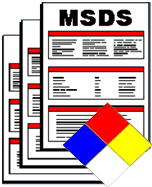 Some municipal water authorities have assessed water fees related to the recovery cost of unmetered water used in the event of a fire in sprinklered buildings. However, owners and operators of unsprinklered buildings have typically not been assessed this fee – even though water usage is also unmetered during a fire. This is even more surprising given the expectation that buildings equipped with a fire protection system use less water during a fire than buildings without a fire protection system. To add to the confusion, Read more…
Some municipal water authorities have assessed water fees related to the recovery cost of unmetered water used in the event of a fire in sprinklered buildings. However, owners and operators of unsprinklered buildings have typically not been assessed this fee – even though water usage is also unmetered during a fire. This is even more surprising given the expectation that buildings equipped with a fire protection system use less water during a fire than buildings without a fire protection system. To add to the confusion, Read more…
 Recent dust explosion accidents and their aftermath highlighted a renewed need to focus on a better understanding of the methods used in preventing these incidents. A two-phase study was commissioned by the Fire Protection Research Foundation of NFPA to develop and verify a more accurate methodology to assess dust explosion hazards while resolving the controversies associated with the current standards. Part I of this study has now been completed Read more…
Recent dust explosion accidents and their aftermath highlighted a renewed need to focus on a better understanding of the methods used in preventing these incidents. A two-phase study was commissioned by the Fire Protection Research Foundation of NFPA to develop and verify a more accurate methodology to assess dust explosion hazards while resolving the controversies associated with the current standards. Part I of this study has now been completed Read more…
 The Society of Fire Protection Engineers is offering a free course on Fire Risk Assessment to improve the understanding on how to mitigate the fire risk in a building or facility. The course titled “Introduction to Fire Risk Assessment” consists of 19 online lectures each at a duration of about 15 minutes. Read more…
The Society of Fire Protection Engineers is offering a free course on Fire Risk Assessment to improve the understanding on how to mitigate the fire risk in a building or facility. The course titled “Introduction to Fire Risk Assessment” consists of 19 online lectures each at a duration of about 15 minutes. Read more…
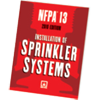 In January 2011, California adopted the 2010 Edition of the California Fire Code, along with the 2010 Edition of NFPA 13. This article will summarize the major differences between the storage chapters of the 2002 Edition (previously adopted standard) and 2010 Edition (newly adopted standard) of NFPA 13 published by the National Fire Protection Association. Read more…
In January 2011, California adopted the 2010 Edition of the California Fire Code, along with the 2010 Edition of NFPA 13. This article will summarize the major differences between the storage chapters of the 2002 Edition (previously adopted standard) and 2010 Edition (newly adopted standard) of NFPA 13 published by the National Fire Protection Association. Read more…
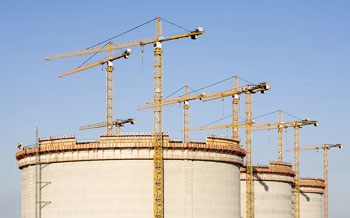 Naval Base Point Loma began construction on a new state-of-the-art fuel storage facility at the Defense Fuel Support Point Point Loma in San Diego. During the planning phase Klausbruckner & Associates was contracted to provide expert fire and building code services on this Navy’s largest single fuel storage and handling facility. Read more…
Naval Base Point Loma began construction on a new state-of-the-art fuel storage facility at the Defense Fuel Support Point Point Loma in San Diego. During the planning phase Klausbruckner & Associates was contracted to provide expert fire and building code services on this Navy’s largest single fuel storage and handling facility. Read more…
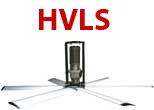 High-volume, low-speed (HVLS) fans require little energy to ventilate large commercial and industrial buildings, and their use can result in considerable cost savings to business owners. But do they compromise fire safety? What are the codes requiring? Read more…
High-volume, low-speed (HVLS) fans require little energy to ventilate large commercial and industrial buildings, and their use can result in considerable cost savings to business owners. But do they compromise fire safety? What are the codes requiring? Read more…
 ESFR (Early Suppression, Fast Response) sprinkler systems, have been rightfully touted as one of the best solutions and best investments in warehouse storage. But are ESFR systems an all-inclusive solution to warehouse protection? Is it the “miracle cure” to all warehousing problems? Read more…
ESFR (Early Suppression, Fast Response) sprinkler systems, have been rightfully touted as one of the best solutions and best investments in warehouse storage. But are ESFR systems an all-inclusive solution to warehouse protection? Is it the “miracle cure” to all warehousing problems? Read more…
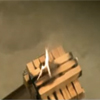 Xtralis, a maker of Aspirating Smoke Detection (ASD) solutions, conducted a series of fire tests in a warehouse setting to demonstrate the capabilities of three smoke detection technologies, an air-sampling solution, a spot-type detector and a beam detector. Read more…
Xtralis, a maker of Aspirating Smoke Detection (ASD) solutions, conducted a series of fire tests in a warehouse setting to demonstrate the capabilities of three smoke detection technologies, an air-sampling solution, a spot-type detector and a beam detector. Read more…
 UPS Flight 6 emergency landed last week near Dubai. About 20 minutes after taking off from Dubai, the crew sought to return, reporting smoke in the cockpit and trouble maintaining altitude. The plane was unable to make an emergency landing in Dubai on its first pass, then began losing altitude and crashed inside a UAE military camp. Read more…
UPS Flight 6 emergency landed last week near Dubai. About 20 minutes after taking off from Dubai, the crew sought to return, reporting smoke in the cockpit and trouble maintaining altitude. The plane was unable to make an emergency landing in Dubai on its first pass, then began losing altitude and crashed inside a UAE military camp. Read more…
 The National Association of State Fire Marshalls has formed an initiative to bridge the safety gap between conventional fire prevention practices, building codes, and fire suppression techniques including the use of renewable energy sources, such as solar power. They have released a report titled Fire Fighter Safety and Emergency Response for Solar Power Systems and which is available from their website. Read more…
The National Association of State Fire Marshalls has formed an initiative to bridge the safety gap between conventional fire prevention practices, building codes, and fire suppression techniques including the use of renewable energy sources, such as solar power. They have released a report titled Fire Fighter Safety and Emergency Response for Solar Power Systems and which is available from their website. Read more…
 Some municipal water authorities have assessed water fees related to the recovery cost of unmetered water used in the event of a fire in sprinklered buildings. However, owners and operators of unsprinklered buildings have typically not been assessed this fee – even though water usage is also unmetered during a fire. This is even more surprising given the expectation that buildings equipped with a fire protection system use less water during a fire than buildings without a fire protection system. To add to the confusion, Read more…
Some municipal water authorities have assessed water fees related to the recovery cost of unmetered water used in the event of a fire in sprinklered buildings. However, owners and operators of unsprinklered buildings have typically not been assessed this fee – even though water usage is also unmetered during a fire. This is even more surprising given the expectation that buildings equipped with a fire protection system use less water during a fire than buildings without a fire protection system. To add to the confusion, Read more…










